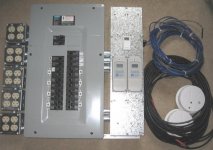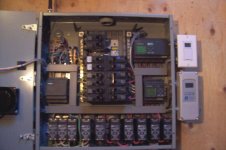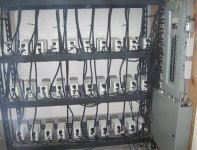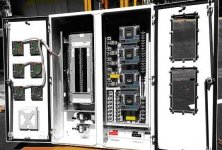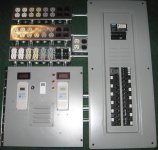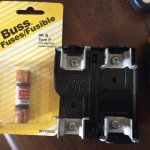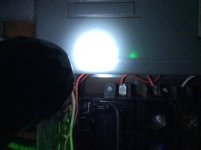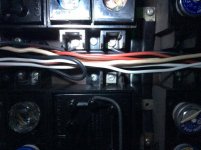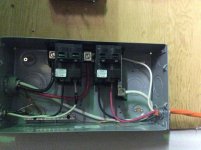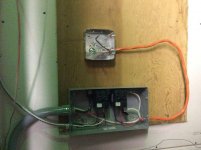I appreciate the thought, but no, I wouldn't be interested.
The PLC/programmable relays are a great option if you have the capacity to modify the program yourself to accommodate the changes that inevitably pop up, but to add the necessary human interface equipment and the programming necessary to allow an end user a reasonable level of future adaptability would make it prohibitively expensive. It's not bad if you can directly program via a laptop, but for a casual user, things change radically. For instance, a setup similar to mine would need an A-B "Panelview" HMI (Human-Machine Interface) to input changes into a program that has already been set up for it. A quick look at eBay shows that these are going for somewhere between $750-3000 without the programming software. By the time you get all of the enclosures, cabling, and other required gear, you are talking some pretty serious jingle.
I would suggest looking very closely at the greenhouse controller and see how it works. An option that has always intrigued me is using one of the more sophisticated sprinkler timers. They are comparatively cheap, reliable, easily programmed, reasonably flexible, battery-backed, and many have an input for rainy days that could be used to shut things down if necessary. All of them that I've seen are 24vac based, but that isn't a limitation - there is a wide variety of power relays, control relays, valves, or basically any other type of control equipment that you could want that are available in that voltage. The end result would be a controller that wouldn't have the ultimate flexibility of the PLC's, but would be much more friendly toward the casual user and wouldn't necessitate hiring someone every time you want to make a change.
The PLC/programmable relays are a great option if you have the capacity to modify the program yourself to accommodate the changes that inevitably pop up, but to add the necessary human interface equipment and the programming necessary to allow an end user a reasonable level of future adaptability would make it prohibitively expensive. It's not bad if you can directly program via a laptop, but for a casual user, things change radically. For instance, a setup similar to mine would need an A-B "Panelview" HMI (Human-Machine Interface) to input changes into a program that has already been set up for it. A quick look at eBay shows that these are going for somewhere between $750-3000 without the programming software. By the time you get all of the enclosures, cabling, and other required gear, you are talking some pretty serious jingle.
I would suggest looking very closely at the greenhouse controller and see how it works. An option that has always intrigued me is using one of the more sophisticated sprinkler timers. They are comparatively cheap, reliable, easily programmed, reasonably flexible, battery-backed, and many have an input for rainy days that could be used to shut things down if necessary. All of them that I've seen are 24vac based, but that isn't a limitation - there is a wide variety of power relays, control relays, valves, or basically any other type of control equipment that you could want that are available in that voltage. The end result would be a controller that wouldn't have the ultimate flexibility of the PLC's, but would be much more friendly toward the casual user and wouldn't necessitate hiring someone every time you want to make a change.

